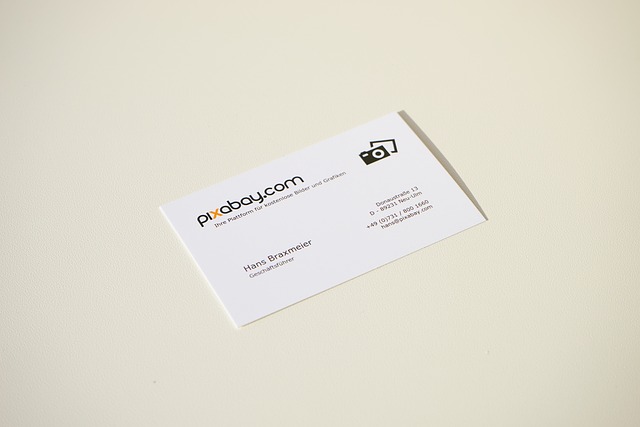Built-up roofing systems are a popular choice for flat commercial buildings due to their durability, cost-effectiveness, and superior protection against weather conditions. These multi-layered systems include a base sheet, reinforcement layers, and a cap sheet, offering comprehensive shielding from UV radiation, temperatures, and mechanical damage. Reputable built-up roofing companies use high-quality materials for easy maintenance and repair, making them a sustainable investment. Choosing such a company ensures expert installation, regular maintenance, and prolonged lifespan for commercial roofs, with services tailored to address blisters, cracks, and delaminations.
In the realm of commercial flat building construction, multi-layered built-up roofing systems stand out as a robust and reliable solution. This comprehensive guide delves into the intricate world of these roofing systems, offering a detailed look at their design, materials, and installation processes. From understanding the layers that protect against the elements to selecting the right built-up roofing company, this article equips readers with knowledge to make informed decisions, ensuring longevity and optimal performance for flat commercial structures.
- Understanding Built-Up Roofing Systems: A Comprehensive Overview
- The Layers of a Built-Up Roof and Their Functions
- Materials Used in Commercial Built-Up Roofing
- Advantages of Choosing a Built-Up Roofing Company for Flat Buildings
- Installation Process: Step-by-Step Guide for Built-Up Roofing
- Maintenance and Longevity: Ensuring the Health of Your Built-Up Roof
Understanding Built-Up Roofing Systems: A Comprehensive Overview

Built-up roofing systems are a popular choice for flat commercial buildings due to their durability and cost-effectiveness. Comprising multiple layers of bitumen roofing and gravel, these systems offer superior protection against extreme weather conditions and provide an efficient, long-lasting solution for low-slope roofing applications. A built-up roof starts with a base layer of fabric or paper, followed by alternating layers of bitumen (a type of asphalt) and gravel. The gravel acts as a protective top layer, shielding the underlying material from UV radiation, extreme temperatures, and mechanical damage.
This multi-ply roof structure is a testament to its robustness, ensuring that even in harsh environments, the system remains intact. A reputable built-up roofing company understands the intricate layering process and uses high-quality materials to create durable, weatherproof roofs. Over time, these systems can be easily maintained or repaired, making them an excellent investment for commercial property owners looking for a reliable and sustainable roofing solution.
The Layers of a Built-Up Roof and Their Functions

A multi-layered built-up roofing system, often employed on flat commercial buildings, is a complex yet effective solution designed to withstand various environmental challenges. The primary layers include a base sheet, usually made from asphalt or bitumen roofing, which serves as the initial protective barrier against moisture intrusion. Overlying this is a series of reinforcement layers, commonly comprised of woven or non-woven fabrics that enhance structural integrity and safeguard against tear damage.
The final layer, known as the surface or cap sheet, plays a crucial role in safeguarding the entire system from intense ultraviolet (UV) radiation, extreme weather conditions, and potential mechanical impacts. This topmost layer is often constructed from durable materials like asphalt, modified bitumen, or polyolefin, contributing significantly to the longevity and performance of the roof as a whole, thus ensuring optimal protection for commercial structures by a reputable built-up roofing company.
Materials Used in Commercial Built-Up Roofing

Built-up roofing systems, a staple in commercial buildings, are renowned for their durability and robust design. The primary components that constitute these multi-layered structures include a base sheet, often made from reinforced asphalt or felts, which serves as a protective barrier against moisture penetration. On top of this, multiple layers of bitumen roofing are added, creating a waterproof seal. Each layer is typically coated with a gravel roof for extra protection and reinforcement, enhancing the overall strength of the system. This multi-ply roof design not only guarantees long-lasting performance but also provides an excellent defense against extreme weather conditions.
When it comes to selecting materials, a reputable built-up roofing company prioritizes environmental sustainability and durability. Modern alternatives include recycled content in the base sheets and eco-friendly bitumen formulations, ensuring that these roofing systems are not only reliable but also environmentally conscious. The careful integration of these components results in a robust, reliable, and long-lasting solution for commercial properties, making it a preferred choice among built-up roofing companies.
Advantages of Choosing a Built-Up Roofing Company for Flat Buildings

Choosing a built-up roofing company for flat commercial buildings offers numerous advantages. These companies specialize in installing and maintaining multi-ply roof systems, which are designed to withstand the unique challenges posed by flat roofs. A reputable built-up roofing company will have extensive experience in handling various types of bitumen roofing and gravel roof installations, ensuring your building’s protection against leaks and structural damage.
Their expertise extends to using high-quality materials, including durable bitumen membranes, to create a robust barrier that can accommodate the expansion and contraction of the structure. Moreover, these companies often provide comprehensive services such as repairs, replacements, and regular maintenance checks, which are crucial for prolonging the lifespan of your roof. This holistic approach ensures not just an efficient installation process but also long-term peace of mind for property owners.
Installation Process: Step-by-Step Guide for Built-Up Roofing

The installation process of a built-up roofing system involves several meticulous steps. It begins with preparing the substrate by cleaning and inspecting it to ensure it’s free from debris and in good condition. A built-up roofing company would then apply an initial layer of bitumen roofing, followed by a fabric reinforcement to enhance durability. The next step is to lay down gravel roof material, creating a protective barrier against moisture. Subsequent layers of bitumen and fabric are added, building up the system’s strength and water resistance. This multi-ply roof approach ensures that any leaks are contained, protecting the commercial building below from potential water damage. Each layer is carefully bonded to the previous one using heat or a suitable adhesive for a seamless finish.
Maintenance and Longevity: Ensuring the Health of Your Built-Up Roof

The health and longevity of a built-up roofing system largely depend on regular maintenance. Unlike sloped roofs, flat commercial structures demand extra care due to their unique multi-ply design, where multiple layers of bitumen roofing and gravel are laminated together. A reputable built-up roofing company understands this complex structure and offers tailored maintenance plans.
By addressing potential issues early, such as blisters, cracks, or delaminations, these professionals ensure the roof’s structural integrity. Regular inspections, cleaning, and repairs can significantly extend the lifespan of a built-up roof, often surpassing 20 years with proper care. This not only saves on replacement costs but also minimizes downtime for businesses operating under such structures, thanks to their enduring protection against environmental elements, including UV rays and extreme temperatures.
